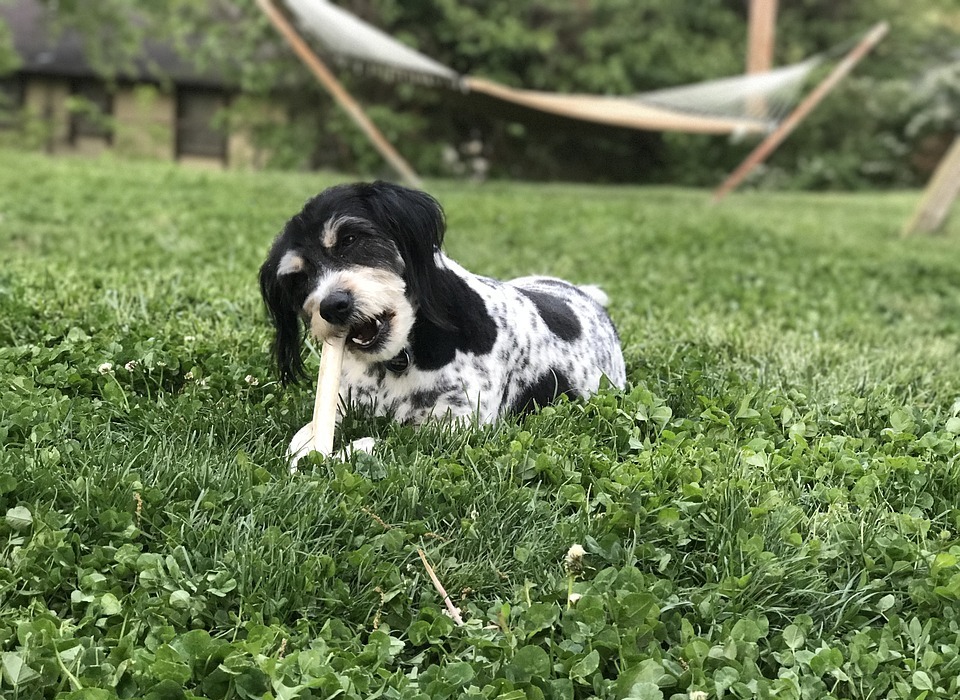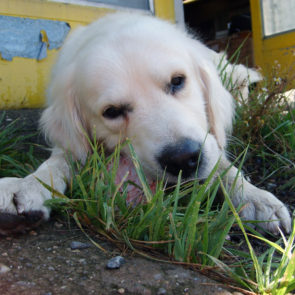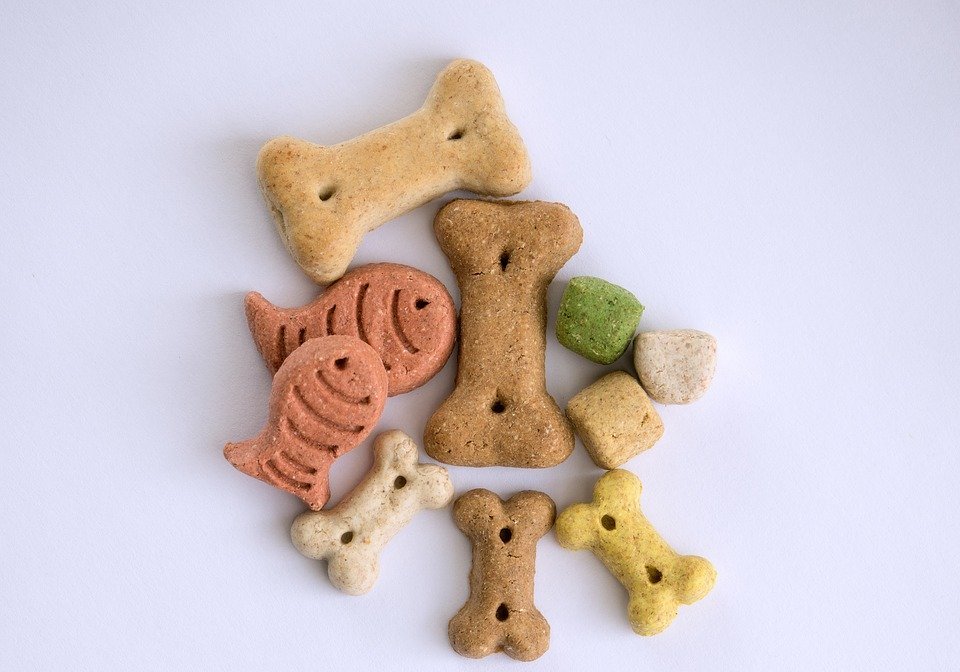Every dog owner knows that feeling: the irresistible urge to give your furry friend a tasty treat. And what could be more natural than a good, old-fashioned bone? But when it comes to rib bones, a big question mark pops up: are they safe for our canine companions?
I'll be honest, I used to think giving my dog, a boisterous Labrador named Buster, a rib bone was a no-brainer. He'd chomp down on it like it was his birthday, leaving a pile of bone fragments in his wake. But then I started hearing the horror stories from other dog owners. Stories of pups choking, their teeth shattering, even internal injuries. Yikes! That's when I knew I had to get to the bottom of this bone business.
And let me tell you, the research was a real rabbit hole! There's so much conflicting information out there that it’s hard to separate fact from fiction. So, I've compiled this comprehensive guide to help you understand the risks and benefits of giving your dog rib bones. Don't worry, I'm keeping things simple, using everyday language, so you don't need a veterinary degree to understand!
(Part 1) Understanding the Risks: Why Rib Bones Can Be a Problem

Why Rib Bones Can Be a Choking Hazard: A Dog Owner's Nightmare
Rib bones, unlike those sturdy, thick femurs, can easily splinter into sharp, jagged pieces. And these shards? They can get lodged in your dog's throat, causing a choking emergency. I've seen it firsthand, and it's a scary sight. Remember the time Buster got hold of a tiny rib bone and started gagging? He was panicking! Luckily, I was able to dislodge the bone, but it could have ended very badly.
How Splinters Can Cause Internal Injuries: A Serious Threat
Even if your dog doesn't choke, those sharp splinters can still be a big danger. They can pierce the delicate lining of their stomach or intestines, causing internal bleeding, nasty infections, and even a life-threatening condition called peritonitis. It's not something you want to risk.
The Risk of Broken Teeth and Mouth Injuries: Painful and Costly
Chewing on rib bones, especially if they're dry and brittle, can result in chipped or broken teeth. And it doesn't stop there! They can also injure their gums, tongue, and even the roof of their mouth. It's a painful experience for your dog and can lead to costly vet bills.
(Part 2) Factors to Consider Before Giving Rib Bones

Here's the thing: not every dog is the same. Before you even think about offering a rib bone, consider these factors:
Your Dog's Age and Breed: A Matter of Sensitivity
Puppies and senior dogs have more delicate digestive systems and weaker teeth, making them more vulnerable to complications from rib bones. The same goes for certain breeds known for their sensitive digestive tracts, like Miniature Schnauzers or Yorkshire Terriers. It's best to be extra cautious with these guys.
Your Dog's Chewing Habits: The Aggressive vs. the Gentle Chewer
Some dogs are natural demolition crews when it comes to chewing, while others are more gentle nibblers. If your dog has a tendency to gulp down large chunks of food, you might want to steer clear of rib bones. They're just too risky for these enthusiastic eaters.
The Size and Shape of the Bone: Choosing the Right Fit
Always select bones that are appropriate for your dog's size. A small bone is a choking hazard for a larger dog, while a big bone can be too challenging for a smaller dog. It's all about finding the perfect match.
(Part 3) Alternative Options to Satisfy Your Dog's Chewing Needs

Don't despair! There are plenty of safe and scrumptious alternatives to rib bones that will keep your dog happy and healthy.
Rawhide Chews: A Classic Choice, But With Cautions
Rawhide chews come in all shapes and sizes, and they're a good source of protein and essential nutrients. However, always supervise your dog when they're chewing on rawhide to make sure they don't swallow large pieces. It's better to be safe than sorry!
Dental Chews: Clean Teeth, Happy Dog
These are designed to help clean your dog's teeth and freshen their breath, making them a win-win for both of you! Look for chews made with natural ingredients and free from artificial colors and flavors. It's worth investing in a healthy treat.
Kong Toys: Fun and Satisfaction in One
Kong toys are a game-changer for keeping your dog entertained and satisfied. They're made from durable rubber and can be stuffed with treats, peanut butter, or even frozen food, giving your dog a fun challenge.
Frozen Treats: Cooling and Satisfying
Frozen treats, like frozen carrots or apple slices, are a refreshing way to cool your dog down on a hot day and provide a satisfying chew. They're a healthy and enjoyable alternative.
(Part 4) The Debate: Are Cooked Rib Bones Worse Than Raw?
This is a big debate amongst dog owners: cooked vs. raw rib bones. Some believe that cooked bones are more likely to splinter, while others argue that raw bones are more dangerous because they're harder to chew.
From my experience, both cooked and raw rib bones present risks. So, I say: it's better to err on the side of caution and simply avoid giving your dog any rib bones at all.
(Part 5) Recognizing the Signs of Choking: Knowing When to Act Quickly
Knowing the signs of choking is vital, so you can act quickly if your dog is in trouble. Keep an eye out for these warning signs:
- Gagging or coughing
- Pawing at their mouth
- Excessive drooling
- Difficulty breathing
- Turning blue
If your dog shows any of these signs, seek veterinary attention immediately. It's not the time to hesitate.
(Part 6) What to Do if Your Dog Chokes: A Step-by-Step Guide
If your dog is choking, every second counts. Here's what to do:
- Try to dislodge the bone by gently pressing on their chest or abdomen.
- If the bone is deeply lodged in their throat, you may need to use pliers or tweezers to remove it. But be extremely careful!
- If you can't remove the bone, rush to the vet as fast as you can.
Remember, in a choking emergency, quick action is crucial!
(Part 7) Learning from My Mistakes: Buster's Bone-Free Journey
After that scary incident with Buster and the rib bone, I decided to ditch bones completely. I switched to safe alternatives like rawhide chews, dental chews, and Kong toys.
He's been doing fantastic ever since. He still enjoys his chews and toys, but he's no longer at risk of choking or internal injuries. That peace of mind is priceless!
(Part 8) The Bottom Line: It's Not Worth the Risk
Rib bones might seem like a harmless treat, but the risks are simply too high. There are plenty of safe and yummy alternatives that will satisfy your dog's chewing needs without jeopardizing their health.
I urge you to chat with your veterinarian about safe chewing options for your dog. They can give you personalized recommendations based on your dog's age, breed, and health history.
FAQs
1. Are all types of bones safe for dogs?
No, not all bones are safe. Rib bones, cooked bones, and bones with sharp edges or splinters should be avoided. It's just not worth the risk.
2. Are raw meaty bones safer than cooked bones?
The raw vs. cooked bone debate is complicated. Some people believe raw bones are more digestible, while others say cooked bones are more likely to splinter. But, ultimately, it's best to err on the side of caution and avoid giving your dog any bones, raw or cooked.
3. How can I tell if a bone is safe for my dog?
It's best to avoid giving your dog any bones at all. But if you decide to offer one, choose a large, thick bone from a healthy animal. Make sure it's free of splinters or sharp edges.
4. What are some good alternatives to rib bones?
There are many safe and tasty alternatives, like rawhide chews, dental chews, Kong toys, and frozen treats.
5. What should I do if my dog swallows a bone?
If your dog swallows a bone, keep a close eye on them for any signs of choking, vomiting, or diarrhoea. If you notice any of these symptoms, contact your vet immediately.
Everyone is watching
-

Can Dogs Eat Bananas? A Guide to Safe Treats
DOGS & PUPPIESThis comprehensive guide will delve into the world of canine nutrition, focusing on the popular question: can ...
-

Can Dogs Eat Oranges? (Is It Safe or Toxic?)
DOGS & PUPPIESThis article delves into the question of whether dogs can safely consume oranges. We'll explore the nutrition...
-

Can Dogs Eat Grapes? The Shocking Truth About This Fruit
DOGS & PUPPIESThis article delves into the controversial topic of grapes and dogs, exploring the potential dangers associate...
-

Why Do Dogs Eat Poop? Understanding Coprophagia in Dogs
DOGS & PUPPIESThis article delves into the perplexing phenomenon of coprophagia, the act of eating faeces, in dogs. We explo...
-

Can Dogs Eat Shrimp? A Guide to Safety and Risks
DOGS & PUPPIESThis comprehensive guide dives into the world of shrimp and dogs, exploring the potential benefits and risks a...
